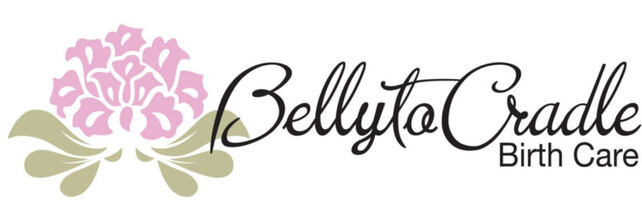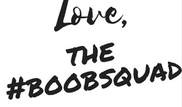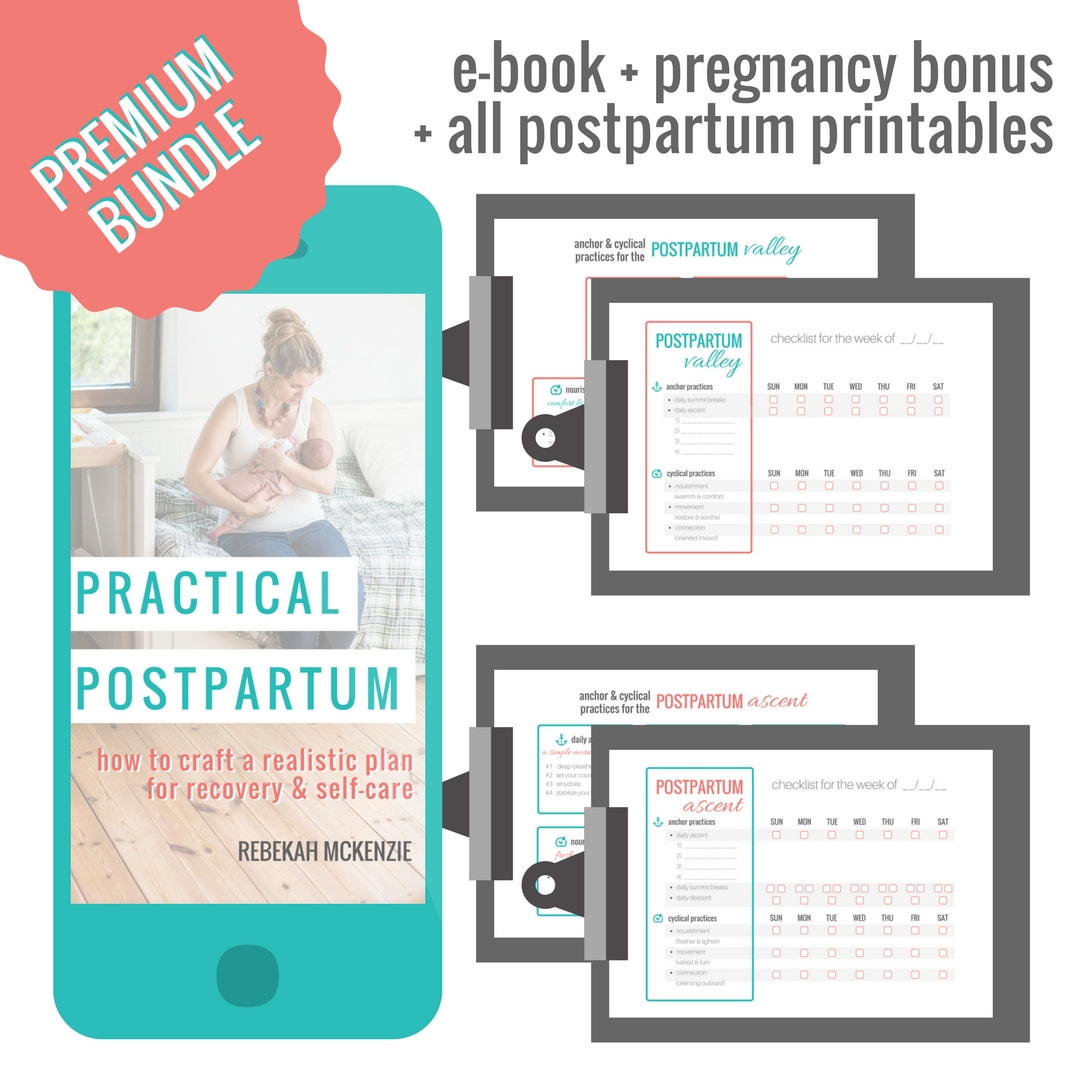 Amber, ICCE, ICD Amber, ICCE, ICD Anyone who has ever given birth can attest that the grueling transformation that takes place during pregnancy, birth and the postpartum is undeniably one of the biggest, most intense experiences of their lives. But so many clients ask, "What is labor like? What does it feel like?" As someone who has given birth four times, how do I adequately explain it? What can I compare to the sensations of opening and releasing, of expansion and contraction? How do I describe the feeling of being overwhelmed while being in control, the idea of working alone while surrounded by a circle of supporters? Birth is just like a marathon I adopted this description a couple of years ago after realizing how many similarities birth and marathons have in common. I only loved this comparison more when a University of Michigan study came out this year that declared that giving birth can actually be harder than running a marathon. But what does running a marathon and giving birth really have in common (especially for those of us who aren't exactly, ahem, running types)? Discovering what actual marathon runners have to say about running and applying their wisdom to birth was quite enlightening. The Desire "You should run your first marathon for the right reasons, because you'll never be the same person again. You must want to do it, not do it because your boss did it or your spouse did it." - Bill Wenmark, running coach There is no way you could catch me running a marathon because I WANT to. In fact, I absolutely DO NOT want to run a marathon. Ever. COULD I run a marathon? I have no doubt I could--but it would not be my most glorious memory ever. In a lot of ways, birth is dependent on personal desire. Not just IF you want to do it (cuz you kinda have to if you've got a bun in the oven) but how you want to go about doing it. Now let me be clear--we aren't just talking about natural birth, although personal desire is the number one motivating factor in having an intentional natural birth. But you cannot go into birth expecting to do it a certain way just because someone you know did it, or you perceive it to be the way you should do it, or the way someone else wants you to do it. One big difference between a marathon and birth is this: there are no winners or losers, no failure, no shortcoming in birth. But finding the best way for you to run your marathon the way you want to will drive you to finish the act of giving birth when the going gets tough--which it almost certainly will. The Mentality "I've learned that finishing a marathon isn't just an athletic achievement. It's a state of mind; a state of mind that says anything is possible." - John Hanc, running writer Ever seen the episode of How I Met Your Mother when Marshall is training for the New York Marathon? He reads all these running books, and one of the things he learns to do is to repeat positive affirmations to himself (in the mirror) on a daily basis. Well guess who else can benefit from doing this?? Pregnant women! Part of my work as a childbirth educator is to help eliminate the culture of fear surrounding birth; to help women build their sense of strength and confidence in their ability to birth their babies however they choose. This involves not only creating a positive state of mind regarding birth, but also eliminating negative voices implying failure, fear, or harm. Is a marathon a scary event to be avoided?? No! (Well, for me it might be.) The Preparation "Virtually everyone who tries the marathon has put in training over months, and it is that exercise and that commitment, physical and mental, that gives meaning to the medal, not just the day’s effort, be it fast or slow." - Mary R. Wittenberg, former president, New York Road Runners Club Who can literally jump off their couch and run a marathon without any physical preparation? The answer: no one (except for Barney, if you watch that marathon episode of How I Met Your Mother). Just like a marathon, birth requires physical preparation. Pregnant women should be exercising no less than they were prior to pregnancy, which involves a minimum of 30 minutes of exercise three times a week. And just like a runner prepares for a marathon, a pregnant woman should prepare for labor by eating lots and lots of protein (the body needs long-lasting fuel that will build the growing muscle mass in her and her baby's body) in the months leading up to labor--aiming for 100 grams a day. And then, just like the night before a big run, she should switch to carb loading during labor--carbohydrates will provide fast, short bursts of easy-to-use fuel which is exactly what the body needs during intense physical exercise! The Pace "I tell our runners to divide the race into thirds. Run the first part with your head, the middle part with your personality, and the last part with your heart." - Mike Fanelli, running club coach Funny, isn't it, that labor is broken into thirds too--early labor, where there's plenty of time to think and be aware, active labor, that requires more concentration, and transition that involves a total surrender to the process. "If you feel bad at 10 miles, you're in trouble. If you feel bad at 20 miles, you're normal. If you don't feel bad at 26 miles, you're abnormal," Rob de Castella, the winner of the 1983 World Marathon Championships said. Huh. Sounds about right. One of the most common mantras we use during birth is to take one contraction at a time--don't think about how many you have left or how long this could last. Do the one you have to do right now. How interesting that Ryan Hall, a U.S. Olympic marathoner thinks the same thing about running a marathon: "I don't think about the miles that are coming down the road, I don't think about the mile I'm on right now, I don't think about the miles I've already covered. I think about what I'm doing right now, just being lost in the moment." The Pain is Productive "At mile 20, I thought I was dead. At mile 22, I wished I was dead. At mile 24, I knew I was dead. At mile 26.2, I realized I had become too tough to kill." - Unknown I couldn't tell you the number of times a mom has looked at me and said, "This hurts so bad I just don't think I can do this anymore!" There are only two things (that I can think of!) that are painful but NOT inherently harmful to our bodies: birth and exercise. Just like working out, birth is creating a change in muscular structures that have to exert significant effort to create that change. In fact, the pain of labor is credited in large part to the emission of lactic acid--the chemical that builds up in the muscles when they are tightened and released over and over. Ever been super sore the day after working out? Yup--just like labor, the pain comes from the lactic acid build up in the muscles. And just like a marathon runner experiences the oxytocin and endorphin high of running across that finish line, the incredible feeling of relief after giving birth is what makes people do it again! The High
"The thirst you feel in your throat and lungs will be gone minutes after the race is over. The pain in your legs within days, but the glory of your finish will last forever." - Unknown "There isn't a trophy for giving birth!" Um, excuse me?? I have heard this statement specifically made about natural childbirth ("there's no special reward for giving birth naturally!") but I beg to differ. First, it's much more complex than getting a reward if you go without meds, and no reward if you don't--remember when I said there is no failure or losing in childbirth?? That must mean that EVERYBODY wins!! At the end of birth, you have just accomplished an incredible feat of nature, no matter how you go about accomplishing it. And the relief you get from finally being DONE after the long months of building a baby, and finally having your baby in your arms and out of your body is your trophy. Plus, the nice rush of endorphin-producing oxytocin you get is pretty awesome too. Although with that relief is often a convincing declaration, "I'm NEVER doing this again!" (Even though you'll gradually forget the pain, and your ovaries will start to quiver every time you see a baby.) After winning her first New York Marathon Grete Waltz declared, "I'm never going to run this again." And then she went on to run and win eight more. So the bottom line is...if you are giving birth, you are basically an extreme athlete, no matter how you go about it. And just like any other athlete, you need a coach! And luckily, that's what we are here for. We're the ones who will get you a cool washcloth to wipe the sweat off your face, we are your water stop, the ones reminding you that you can do it from the sidelines, the team car rolling along next to you in case you need more help. Please let us know if there is any way we can help support you as you train, prepare for, and run your birth marathon!
0 Comments
Have you experienced the “mombie” (mom+zombie) state yet? You’re so tired from lack of sleep that you feel only barely alive and functional, easily confused and unable to focus. You feel like all you do is feed the baby in the same spit-up stained t-shirt and yoga pants you've worn for two days--or is it three now? You can't find your phone and you can't remember when you actually ate a full meal, had more than three hours of consecutive sleep, or took a shower. Why is it that motherhood is synonymous with sleep loss? There are actually two sets of circumstances surrounding the beginning of motherhood that seem to set the stage for being so dang tired: late pregnancy and early postpartum. At the end of pregnancy, several factors culminate in prenatal insomnia. You may find it difficult to get comfortable during the night. When and if you do get comfortable enough to sleep, you may be disturbed by leg cramps, heartburn, baby kicks, or an increased need to urinate. Additionally, you may find that once you’re settling in and powering down to sleep, your mind kicks into gear with all the nesting tasks you have left to complete and maybe even anxieties surrounding giving birth or those newborn weeks. Just after the birth of your baby, another set of circumstances emerges to cause the sleep deprivation for which early postpartum is so infamous. The most obvious factor is your baby waking you up, needing to feed or have a diaper change. This is partly due to your baby’s tiny stomach capacity and innate need to feed often, but it’s also due to the fact that your baby’s circadian rhythm (the sleep-wake cycle) hasn’t yet calibrated to match that of the other earthlings in your household. Baby is still used to being awake at random times in the darkness of your womb and isn’t accustomed to, or even capable of, sleeping for long stretches of time in the dark hours. And if you’re worried about baby’s health and safety, that can also contribute to poor sleep quality. So, what can we do? While knowing the causes of sleep loss can be helpful, let’s bridge the gap and cover some helpful tools. Some of these tools are in the category of prevention: keeping the causes of sleep loss at bay (or from occurring at all). Others are in the category of coping: acknowledging that “it is what it is” and taking some action to mitigate the effect of sleep loss. Preventing and Coping with Sleep Loss:
All over the world, moms are celebrating World Breastfeeding Week, some even honoring the event with traditions like the Global Big Latch On in some communities (come see us at the Global Big Latch on of Escambia & Santa Rosa Counties). In honor of this week, we are keeping it real. It seems like the minute you announce your pregnancy, the advice starts to pour in from all directions--not just for pregnancy and birth, but for breastfeeding too. From "Don't eat broccoli or asparagus, it will give the baby gas," to "Never wake a sleeping baby to eat!" we are sure you've heard all the strange (and not-so-great) suggestions there are out there. And while there are some strange pieces of advice that are also mythical, there are also some strange pieces of advice that can be very, VERY helpful and real. #1: Give the ladies air time. Yes, we are suggesting you go topless once in a while. Letting your twins free while you're breastfeeding can be a very important part of the process--not only because your nipples are not accustomed to friction for 8 hours a day at first, and fabric against them can feel like rubbing shards of glass on them as they heal from any initial damage, but also because wearing a bra or shirt 24/7 can promote bacterial and fungal growth. Yeast and other bacteria thrives in dark, moist, warm places (aka, your nursing bra), and your breastmilk contains carbohydrates/glucose, which also feeds bacteria and fungi. So by going topless, you are not only giving your nipples time to heal and be more comfortable, but you are also allowing them to stay dry so that you can help avoid a thrush outbreak or other bacterial infection in your milk ducts. Wearing a button up shirt or a robe can facilitate this--hey, you could even just cut some holes in an old t-shirt and be set! Just make sure that you don't forget about your state of dress (or lack thereof) and accidentally answer the door for the UPS man. #2: Strange breastfeeding positions are sometimes the best. One of the most common issues in the early days of breastfeeding, and then later on during changes that can impact supply, are plugged ducts. This is when fat globules in your milk collect in one part of a duct and form a clog in the flow of milk. Many moms feel this as a hard knot that could be anywhere from the size of a marble to a golf ball. When this happens, one of the best ways to work the knot out is to lay your baby flat, and "dangle" your breast over your baby to feed, with the baby's chin against the knot. This allows gravity and the baby's oral movement to work the knot out. (See this position here). Another fantastic breastfeeding position to help clear plugged ducts (or prevent them if you have them happen more than once) is the "over the shoulder" position. Imagine throwing your baby over your shoulder, upside-down, and you've about got the image! In this position, you are laying down on your side or back, and baby is lying with legs literally over your shoulder. (See this position here). These positions aren't just for plugged ducts, though. Switching the position baby feeds in frequently stimulates different parts of the breast, which can increase supply AND help prevent baby from developing a preferred nursing position or side. So, if you've struggled with plugged ducts more than once, or are uncomfortably engorged in the early days, this can be an especially helpful position if you have a very little one. #3: Other Ways to Remove Plugged Ducts. Plugged ducts can be nasty little boogers that are both painful and a precursor to mastitis (an even nastier booger). Thus, our desire to help you remove them as easily as possible, and avoid them in the future. And there is more than one way to fix this problem. The key with removing the clogged ducts is to dissolve the plug of milk fat--and this can require massage, heat or vibration. So, our favorite tools to suggest for plugged duct removal are:
#4: Put that stuff on everything.
This hearkens memories of My Big Fat Greek Wedding where the father of the bride believed that any ailment could be cured by Windex. Well, just switch out Windex for breastmilk and we've got a similar situation going on here. From pink eye, to scratches and cuts, to ear infections, lots of moms are now treating common ailments with a drop or two of anti-body filled breastmilk. In fact, many moms are stashing extra breastmilk in tiny syringes in the freezer just for situations like this. It might sound crazy, but there's lots of evidence that it works!! So, in celebration of World Breastfeeding Week, maybe stash away these "crazy" suggestions for later use--you might need them. And we'd love to hear about any weird or strange breastfeeding suggestions you've been given that have worked for you! |
This is us.We are Women. We are Moms. We are here to help your family blossom. Archives
September 2019
Search
All
|
Building 4
Pensacola, Florida, 32504
We proudly provide
Childbirth Education, Placenta Encapsulation, Lactation Consultations & Doulas
in Pensacola, Milton, Pace, Gulf Breeze, Navarre, Crestview, Ft. Walton, Florida.
Copyright 2017, Belly to Cradle, LLC.
Photo Credits: Kayla Reeder Photography, Lynette Sanders Motherhood Photography,
Savanna Morgret Photography, Finding Beauty in the Ordinary Photography,
& New Light Birth Photography
|
|



















